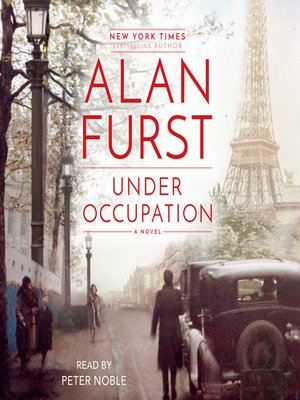You see it all the time, on all the news channels: brightly coloured maps showing how many cases each state has. New York, California, Texas and Florida are dark red, because they have so many cases.
But that's not a particularly meaningful bit of information. Of course those states have the most cases: they have the most people.
A better map would show the infestation of corona virus as a percentage of population. On that map, the dark-red states would be Louisiana, Arizona, Florida, Mississippi, New York, New Jersey, Alabama and Georgia; each of those states has more than 2,000 cases per 100,000 people.
Close behind would be South Carolina, Rhode Island, DC, Nevada, Tennessee, Massachusetts, Texas, Arkanss, Delaware, Maryland, Iowa, and Illinois, each with more than 1,500 cases per 100,000 people.
California would be in the middle group, along with Nebraska, Connecticut, Idaho, Utah, North Carolina, Virginia, Oklahoma, Indiana, South Dakota, Minnesota, New Mexico, Kansas and Wisconsin, each with 1,000 to 1,499 cases per 100,000.
All this shouldn't make the authorities, or the people, in Texas and California feel much better about the whole thing, but it would give a more meaningful sense of how bad things are in various states.
If you want to know where your state stands, go to https://www.cnn.com/interactive/2020/health/coronavirus-us-maps-and-cases/ and click the column heading "...per 100,000 people." Bear in mind, too, that the great majority of cases in the northeast -- New England, New York and New Jersey -- are cases that came up in the early stages of the pandemic, before we knew as much about how to stop the spread.
An even more useful map would be one that showed the states' relationship based on positivity rates. Positivity rates are the best indicator of how fast the virus is spreading in an area. The worst places on that map would be Mississippi (21%), Texas (19%), Florida (17.5%), Alabama (17%) and Nevada (16%), Washington (15%) and Idaho (also 15%). You can find these statistics at https://coronavirus.jhu.edu/testing/testing-positivity, but I don't know where you can find an actual map to illustrate these statistics in a quickly-understandable way.

 The audio books we've listened to on this trip were Reasonable Doubt, by Charles Todd -- a whodunit set in England in the 1920s; Murder in Mayfair, by D.M Quincy, a disposable mystery set in London in 1814, most remarkable for making almost no mention of any historical figures or events (I believe the name Napoleon came up once, but that's pretty much it; what's the point of "historical fiction" if you're not going to tie it into anything that makes a time unique or interesting?); Blue Moon, by Lee Child, an entertaining action story set in some unnamed American city, and featuring his crime-fighting hero Jack Reacher (I couldn't believe my luck when I found there was a Reacher novel I'd never read or listened to); The Evil Men Do, by John McMahon, another present-day crime thriller set in Georgia -- these novels make me wonder: when did fictional detectives quit being idiosyncratic, like Poirot and Marple and Queen and Stout, and instead all become flawed? Is anybody else tired of hearing about how the detective has to not only solve the crime but overcome alcoholism and the demons in their past all at the same time? That's not to say McMahon's book wasn't interesting -- it was -- but after a few of these novels they all start to feel formulaic. (On the other hand, there's Jack Heath's detective Timothy Blake, a cannibal who savors his flaws.) We also started Alan Furst's novel Under Occupation, a spy thriller set in occupied France, but didn't finish it. Usually we just abandon whatever we were listening to when we get home, but this one's not very long and I'm enjoying it, so I'm going to listen to the rest of it on my own.
The audio books we've listened to on this trip were Reasonable Doubt, by Charles Todd -- a whodunit set in England in the 1920s; Murder in Mayfair, by D.M Quincy, a disposable mystery set in London in 1814, most remarkable for making almost no mention of any historical figures or events (I believe the name Napoleon came up once, but that's pretty much it; what's the point of "historical fiction" if you're not going to tie it into anything that makes a time unique or interesting?); Blue Moon, by Lee Child, an entertaining action story set in some unnamed American city, and featuring his crime-fighting hero Jack Reacher (I couldn't believe my luck when I found there was a Reacher novel I'd never read or listened to); The Evil Men Do, by John McMahon, another present-day crime thriller set in Georgia -- these novels make me wonder: when did fictional detectives quit being idiosyncratic, like Poirot and Marple and Queen and Stout, and instead all become flawed? Is anybody else tired of hearing about how the detective has to not only solve the crime but overcome alcoholism and the demons in their past all at the same time? That's not to say McMahon's book wasn't interesting -- it was -- but after a few of these novels they all start to feel formulaic. (On the other hand, there's Jack Heath's detective Timothy Blake, a cannibal who savors his flaws.) We also started Alan Furst's novel Under Occupation, a spy thriller set in occupied France, but didn't finish it. Usually we just abandon whatever we were listening to when we get home, but this one's not very long and I'm enjoying it, so I'm going to listen to the rest of it on my own.



